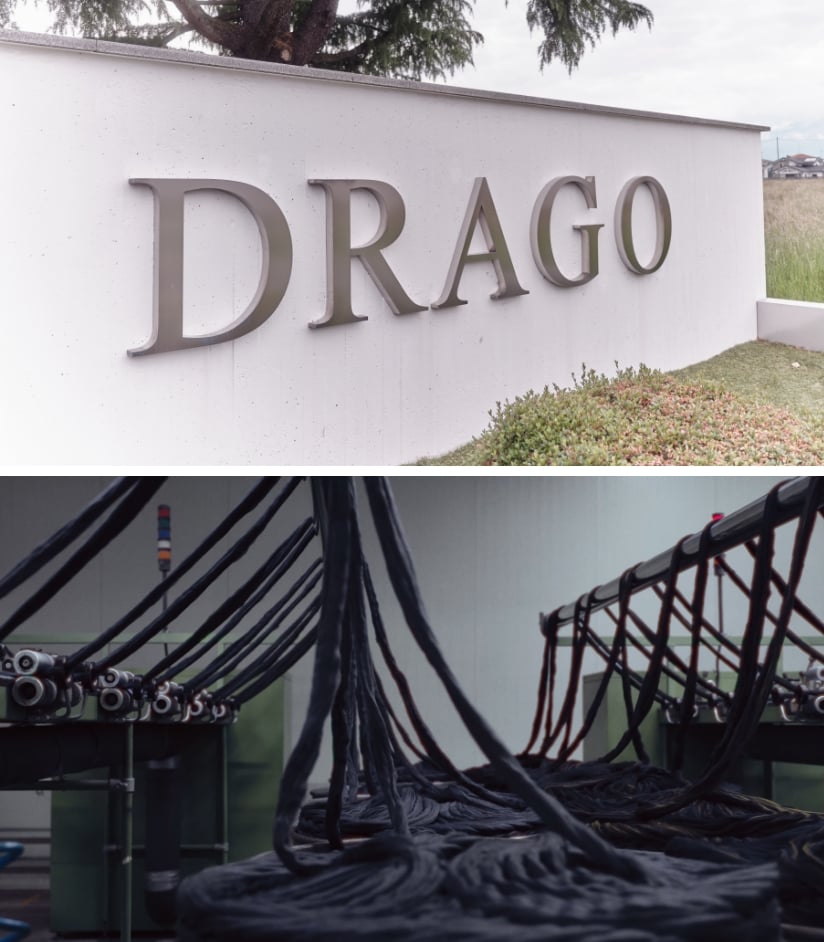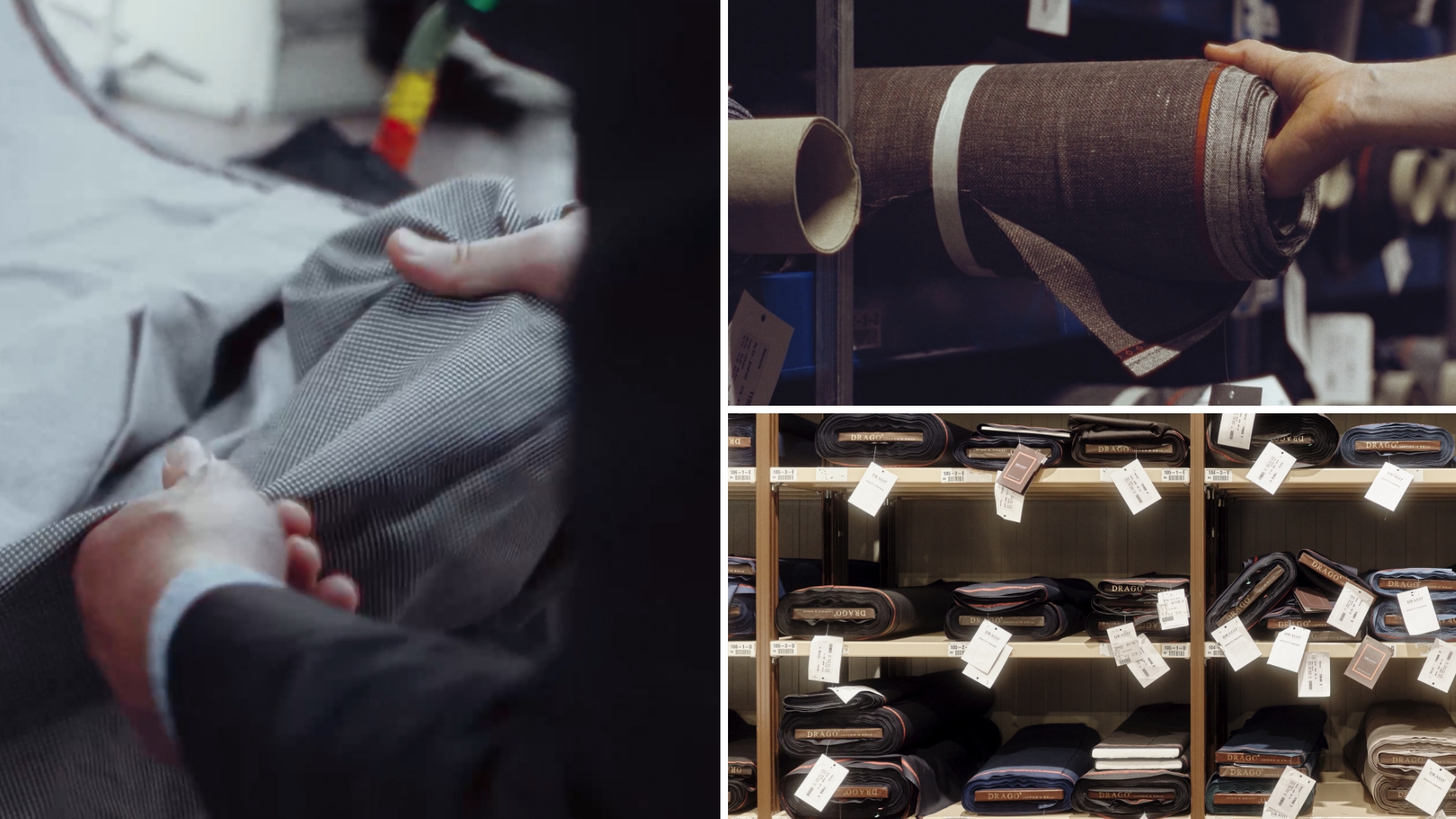

The secrets behind Drago's super fine wool
In Biella, it all started with the water.
During the 18th century, locals in the northern Italian province, which lies in the foothills of the Alps, turned away from farming and winemaking to try their luck at textile production. With frequent rain and rivers flowing down the mountains, the Piedmont region could provide the unreal amount of water needed to transform fibre into finished cloth.
According to Amedeo Beretta, Sales Area Manager at the Drago mill, this caused a literal uphill battle. “A couple of hundred years ago, mills were always going higher and higher up the mountains to get the cleanest water. The highest mill got the clean water, the second got the water that had already been used to wash the fabric at the higher mill.”


Founded in 1973, Drago is a relative newcomer in a region that has been defined by the textile industry. Thanks to evolving technology, and the area’s water being naturally low in harmful minerals, they’ve still been able to produce premium wool without having to fight their way to the top of the mountain. They do this through a 90 day process that begins thousands of miles from Italy.
“Super fine merino wool is bought by our buyers in Australia or New Zealand,” Beretta explained. “The wool arrives here washed, and after ten or 12 stages of combing the fibres, we obtain the yarn. Once we have the yarn, we can prepare the loom for weaving.”

Creating super 160 wool
Drago specialises in super fine wool, the highest Moss uses being the super 160. The ‘super’ number relates to the diameter of the fibre. In the case of the 160, that’s an ultra-fine 15.5 microns (one micron = one millionth of a metre). The thinner the fibre, the lighter the cloth and softer the handfeel. Selecting such high quality wool is a very deliberate process. “We buy the wool not when we need it, but when we like it,” Beretta says. “And that’s a huge difference.”


Giving cloth a soul
Between buying the fibres and the finished cloth, the wool is tested in a lab to ensure it meets Drago’s quality standards. After it’s woven together, skilled workers known as rammendatrici - menders - inspect the wool for imperfections, a painstaking process that is performed entirely by eye. Following this step, the wool still feels coarse, something Beretta describes as “a body without a soul.”

“We give it the soul in the finishing. It is the ‘nobilitation’. Like when the King nominates you ‘Sir’.” The finishing is one reason why the mills of old wanted to be higher in the mountains. Nowadays, enormous machines, not your location in the hills, ensure clean water surges through fibres to heat, wash and process the cloth, turning it into the finished product.

Despite the technology, the human skill, the passion, and the water that soaks Piedmont, the quality of Drago’s wool ultimately comes down to the raw materials. To explain this, and to lightly take the Michele out of us Brits, Beretta put it in terms we could understand:
“Making fabric is like making lovely fish and chips. You can eat it everywhere in the UK, but the difference lies in the ingredients: if the cod is good, the chips are good, the oil is good, you are almost sure that the final result - even if it’s not a Michelin star dish - is going to be good. Same for us and fabric. If you start with good wool, you can expect a much higher standard of quality.”

So what separates a Moss suit, cut from Drago cloth, from other wool suits?
“The cloth is higher than the standard level of quality, in the draping, the handfeel. The super 160 is resistant enough to cover your daily job,” Beretta told us. “And under the sun, it’s not bright and shiny, but because the fibre is finer, it has a sheen.
There is a light inside.”
Explore the Drago collection



